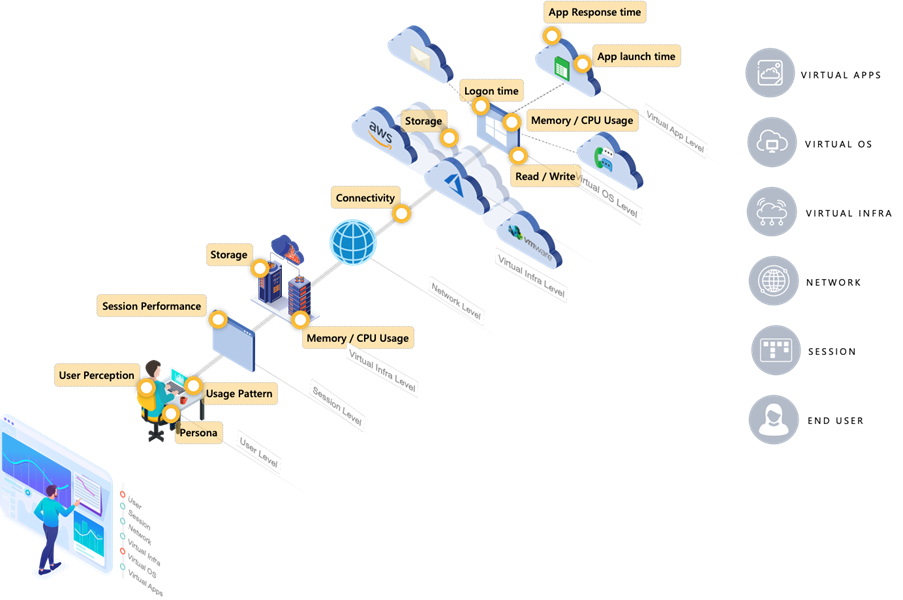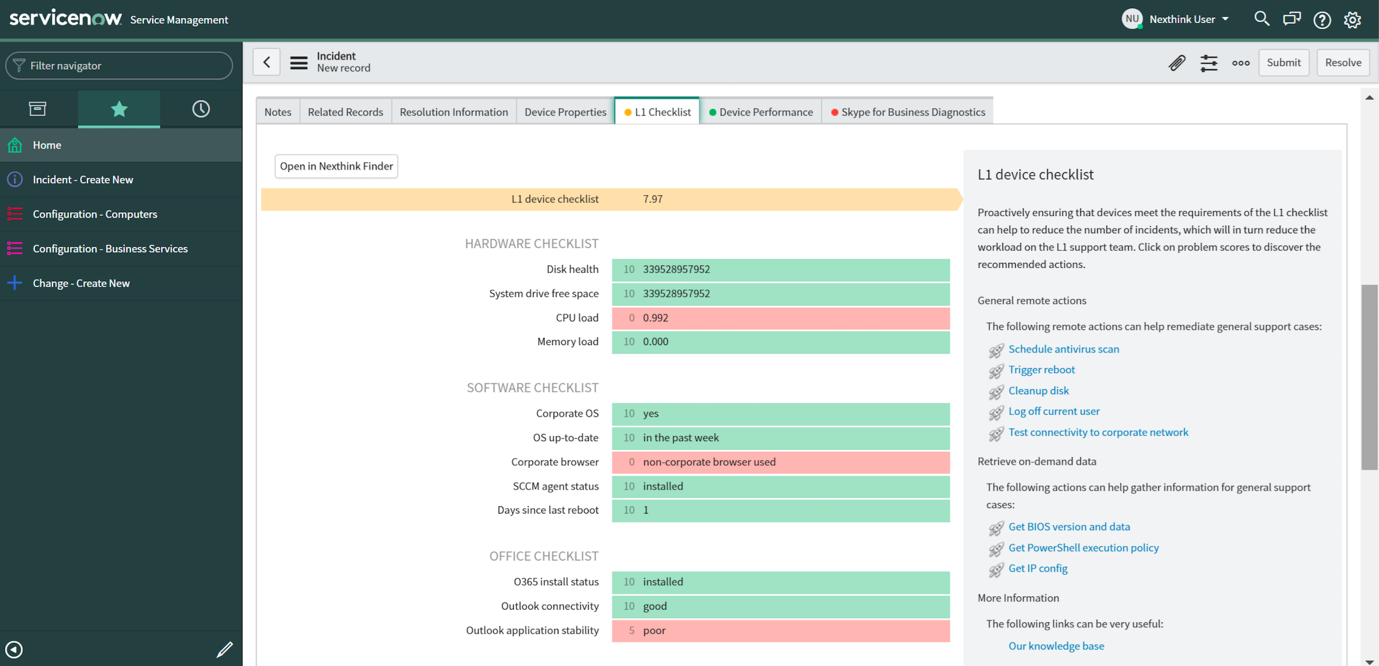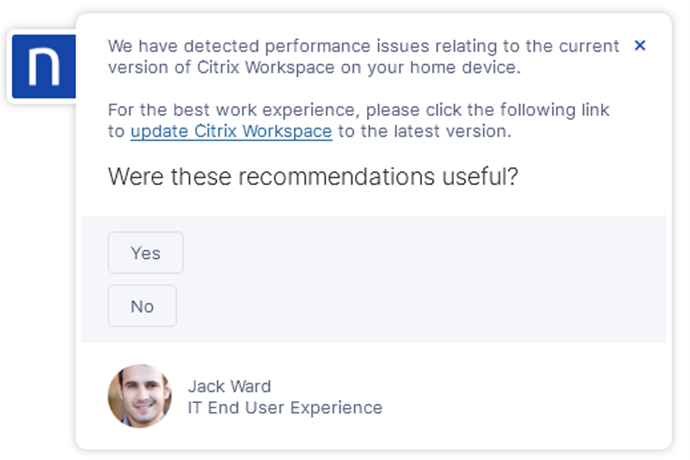Mean Time to Innocence: Avoiding the Blame Game with Desktop Virtualization
Mean time to innocence (MTTI) is a term used by IT teams to prove that their respective domain is not the source of a particular issue.
In other words, it’s a fancy term to avoid blame when something goes wrong. Each team has its own domain-specific tools to prove the issue is not their fault.
With respect to desktop virtualization, here are just some of the domains that are relevant when diagnosing issues:
- applications, their configuration, and location relative to data(bases)
- data(base) platforms the applications rely on
- network infrastructure, including LAN, WAN, VPN, and everything in-between
- virtualization platforms, the supporting infrastructure, and remoting protocols
- virtual device sizing and configuration
- access points and connected peripheral devices
- operating system builds, configuration, patch status, and so on……
Everything looks great, but everyone hates us!
You may have heard of the Watermelon Effect—where everything on the outside looks hardened and green, but if you look inside, everything is red and squishy!

Focusing only on the individual silos of a virtual desktop solution might make everything seem green, at least from a silo perspective, but the resulting employee experience can still be terrible.
Contextual vs Surgical – What does success look like?
One of the most common feedback items I receive from Nexthink customers is that virtual teams often unfairly receive the blame for incidents. As virtual desktop environments are complex, tickets are often escalated far too quickly to L3 virtual support teams under the assumption that the problem is ‘virtual’; quite often ‘virtual’ has nothing to do with the problem.
My advice?
Avoid passing the blame in your environment when it comes to virtual desktops by following these steps:
(1) Prioritize based on the context, scope, and impact of issues
On the surface, problems can appear less urgent than they are. I spoke to a customer last week that described finding an issue negatively affecting only 5% of their total employees. However, 80% of those users were developers, therefore one group of employees were seriously impacted, spanning multiple device types and locations. In this example, the customer was able to fix the issue quickly and communicate to the relevant users, some of which had not reported the issue yet.
Now imagine a similar scenario but where the issue only affects revenue-generating employees; quickly finding the scope of issues becomes incredibly valuable.
(2) Know where to start looking
Copious amounts of raw data sourced from various silos but without context is meaningless. Starting with the experience consumed by the employee allows an approach that encompasses all of the silos I mentioned earlier.

Nexthink brings end-to-end VISIBILITY across your entire environment
Another customer I spoke to was dealing with vague complaints of poor performance from a set of users, but everything looked fine from an infrastructure perspective.
After investigating with Nexthink, the cause was identified as an application latency issue with a specific set of applications, but only for a specific set of users. These virtual desktops were hosted in a different data center to the application data, resulting in lag within the application itself.
By understanding the affected applications and the users that use them, the relevant users were migrated to a virtual platform hosted in the same location as the application data. The result, happy employees. But rather than relying on anecdotal positive feedback from employees, this customer used Nexthink’s DEX Score to prove that the move was beneficial from an experience perspective.
(3) Shift-Left escalations with checklists and ITSM integration
As support escalations increase, the cost per ticket increases dramatically. Therefore, enabling L1 support to quickly identify and properly escalate tickets is crucial. These checklists are also very useful for operational teams to proactively improve services to avoid tickets in the first place. A successful approach quickly cuts through the complexity of desktop virtualization, providing a checklist of appropriate metrics and scores; and if this checklist is integrated into the ITSM platform, even better.

Nexthink L1 Device Checklist surfaced in ServiceNow
(4) Build bridges through proactive communication
Email is a sub optimal way to communicate with employees at the best of times. When employees feel like they are not being listened to, the tendency for escalations and complaints to occur via their internal networks and contacts drastically increases, heightening pressure and blame.
Targeting the relevant employees with contextual information within the virtual desktop session is key when fixing issues, especially when the access point may not even be owned or managed by IT.
Proactive engagement also builds bridges, especially when IT has found an issue before it is reported by employees.

Nexthink Engage offering contextual information within a virtual desktop session
It’s never too late to focus on experience
Avoiding the blame game requires a contextual, experience-led approach that cuts through the silos of IT, allowing you to focus on what’s truly important.
At Nexthink, we continue to see new customers choosing us to put experience at the front of their decision-making across all desktop types, whether they are physical, virtual, single-session, multi-session, on-premises, or cloud. We are also seeing many customers extend their Nexthink deployment into their virtual environments to gain the visibility they need to turn the tide; in the next blog, we will share one customer’s experience using Nexthink to improve the experience of virtual desktop users.
At Nexthink we believe everyone deserves a fantastic digital experience, regardless of how their desktop is deployed.
Related posts:
- Your MS Teams Rollout Needs Specific Help—Not General Guidance
- Uncover How Your Employees Experience Their SaaS Applications in Real-Time
- What Your IT Chatbot Can Look Like Running on Full Power
- 8 Websites Every End-User Computing Professional Needs to be Visiting Daily